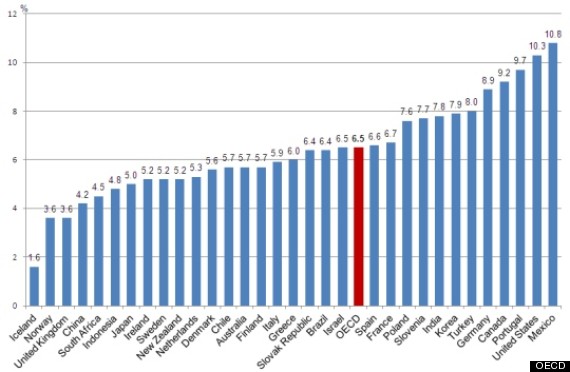Tim Ferriss, the Internet entrepreneur and best-selling author, is best known for his unorthodox views on efficiency. His two books, The Four-Hour Work Week and The Four-Hour Body have earned him both devotees and critics. In his second book, he advocates a low-carb, high-protein eating habits, strength training over cardio, regular blood analysis, a steady diet of supplements and several naps over one prolonged period of sleep and more.
But why would a successful tech entrepreneur and businessman tackle health and wellness? "The second thing, outside of work that people felt was unchangeable was their physical reality," Ferriss says in the latest episode of Hulu's A Day in the Life, as way of explanation. "And I felt that it wasn't true."
Ferriss was the most recent subject of the show, produced by Supersize Me's Morgan Spurlock, which profiles a newsmaker as they go through a typical day. HuffPost Healthy Living decided to see if Ferriss, the original "bodyhacker" practiced what he preached. The results? Pretty darn close. While the production team didn't catch Ferriss sleeping once during the 15 hour period they followed him -- from 8 a.m. to about 11 p.m. -- they did take in many of his unusual personal habits. Herein: the world, according to Ferriss.
Fitness: We meet Ferriss at 8 a.m., as he spends about five to 10 minutes meditating. He doesn't exercise again until 6 p.m., when he goes to the gym for 20 minutes of weight lifting. "I treat exercise like a drug, you hit a minimum effective dose and triggers growth response, strength response, hormonal response," he says, in lockstep with his book's advice.
Food: Ferriss had blood taken at about 9 a.m., which required a 12-hour fast. While we follow him to a working lunch, we do not see food pass his lips. A dinner again, shows Ferriss offering professional advice to friends with untouched plates in front of them. The restaurant they chose was famous for unusual cuts of meat and pork in particular -- in keeping with Ferriss's meat-heavy dietary recommendations.
In the middle of the morning, he ate a handful of Brazil nuts for their selenium content (for "testosterone production," he claims), along with Cissus Quadrangularis, which he claims help to prevent obesity and also soft tissue injuries, and Alpha-lipoic acid (which he believes stabilizes his blood sugar).
Brazil nuts are certainly a great source of selenium, though research suggests that it has no discernable effect on testosterone levels. And while CQ is used as an anti-obesity drug, preventing soft tissue injuries is not one of it's listed uses. Alpha-lipoic acid is sometimes used by Type 2 diabetes patients to help manage blood sugar levels and one of its known effects is lowering blood sugar.
Ferriss ended the day with an antioxidant rich treat: a cup of yerba-mate tea and two glasses of Malbec wine.
For more, watch the full episode below.

